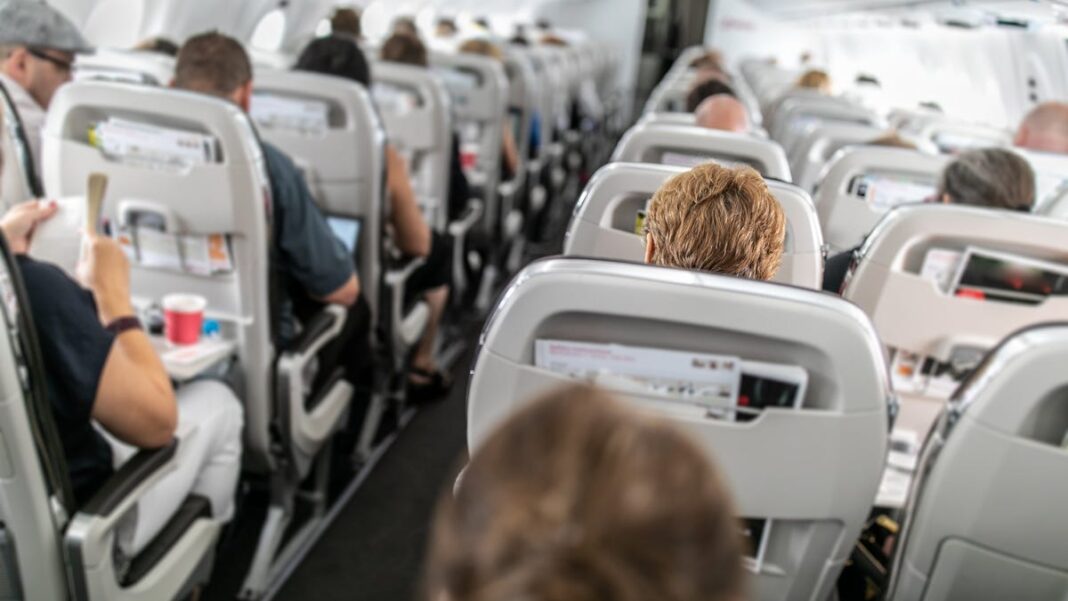‘Tighter than sardines in a can’: 41% of travelers advocate for prohibiting reclining seats on airplanes
The issue of reclining seats on airplanes has sparked intense discussions among travelers.
With airplane seating becoming increasingly cramped, reclining your seat can drastically impact your available space. While leaning back may provide some relief, when the seat in front of you is reclined fully, it can lead to a rather uncomfortable experience.
An intense confrontation highlighted this dilemma on a Cathay Pacific Airways flight in September when one passenger declined to straighten her seat, inhibiting the couple behind her from viewing the television screen. This escalated into seat kicking and shaking.
While we hope your upcoming flight is free from such disputes, you might also be contemplating whether reclining your seat is socially acceptable. Some people believe it should be entirely banned, particularly on shorter flights.
A recent survey by The Harris Poll for La-Z-Boy in October uncovered that 41% of American adults would be in favor of banning reclining seats on domestic flights. Among the 2,051 people surveyed, the groups most supportive were individuals over 65 and those aged 18 to 34.
“The topic of reclining seats on airplanes is highly divisive. Some individuals cherish their slight incline at 35,000 feet, but it can considerably intrude on the comfort of others,” stated Christy Hoskins, CMO of La-Z-Boy, in an email to YSL News.
Advocating for the ban, Bryan Murphy, a 43-year-old travel expert from Riverside, California, remarked, “Honestly, it just makes sense to prohibit reclining seats on domestic flights.” He noted that such a ban would eliminate any discomfort or uncertainty between passengers regarding the seat behind them.
“With the already cramped space, why create additional tension at 30,000 feet?” Murphy continued. “Implementing a no-recline rule would establish a straightforward standard that prioritizes everyone’s comfort and maintains harmony onboard.”
In contrast, Maria Opatz, a 32-year-old frequent business traveler from Minneapolis, disagrees. “Here’s my opinion: you paid for your seat, and that includes the ability to recline,” she asserted. “There’s no need to feel guilty about using it.”
Respectful ways to recline your seat
Since reclining seats aren’t officially banned in the U.S., passengers can still lean back if they choose. Here are some tips to exhibit good manners while flying.
“First, we must recognize that reclining one’s chair does affect the person seated behind us,” noted Jo Hayes, an etiquette expert based in Australia. “Even though reclining is within our rights, it can be bothersome for the individual behind.”
Hayes advises passengers to recline slowly and gently, avoiding abrupt movements that could disrupt someone’s drink or laptop.
“It’s courteous to turn back and offer a friendly smile along with an apology, if possible,” Hayes suggested.
When adjusting your seat back to the upright position, do so gradually to avoid disturbing the passenger behind you. Additionally, don’t overlook the request to raise your seat during meal service.
“Such small acts of consideration can significantly lessen the irritation others may feel,” Hayes commented.

